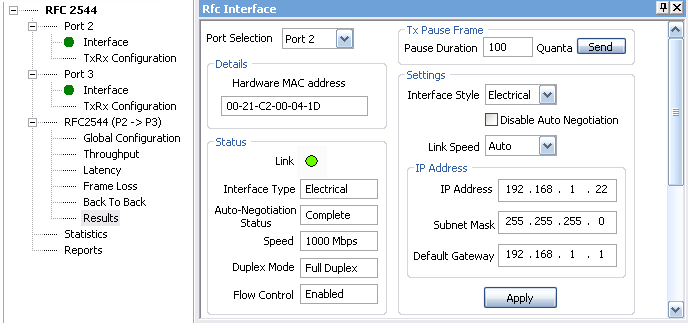

The corresponding Layer 1 data rate on the Ethernet wire is 12442 x (1518 + 20) x 8 = 153,086,368. The maximum Ethernet frame rate supported by the PTP 650 link is 151,100,000 / (1518 x 8) = 12442 frames per second. Suppose we're going to test with 1518 byte Ethernet frames and connecting using 1000BASE-T. The capacity found from the User Guide or LINKPlanner is 151.10 Mbit/s in each direction. In other words, the useful traffic load is deemed to include the additional 20 bytes of overhead that are on the Ethernet wire, but not normally counted as part of the Ethernet frame.Īs an example, consider a PTP 650 link with Full license, operating at 256QAM 0.81 Dual, 1:1, IP link optimization and zero range. If a networkig device works at 100% of the possible traffic we can't ask for much more.īy specifying throughput as a percentage of the capacity of the physical medium, RFC2544 is opting for a Layer 1 measurement. That makes perfect sense in the original context where, for example, an operator wants to know the performance of an Ethernet switch in the case where the inputs are loaded at 100% of the maximum possible traffic. The data traffic applied in RFC2544 is expressed as a percentage of the capacity of the physical medium. The individual tests in RFC2544 are as follows: RFC2544 is still widely used, and is often supported by measurement and test systems.

In 1999, the Internet Engineering Taskforce (IETF) attempted to set some standards on measurement and comparison of networking performance in their RFC2544 recomendation. I'll optimistically assume you've already looked at this. We provide some background on the specification and measurement of Ethernet capacity in wireless links in the appropriately-named Ethernet capacity specifications and measurements post.


 0 kommentar(er)
0 kommentar(er)
